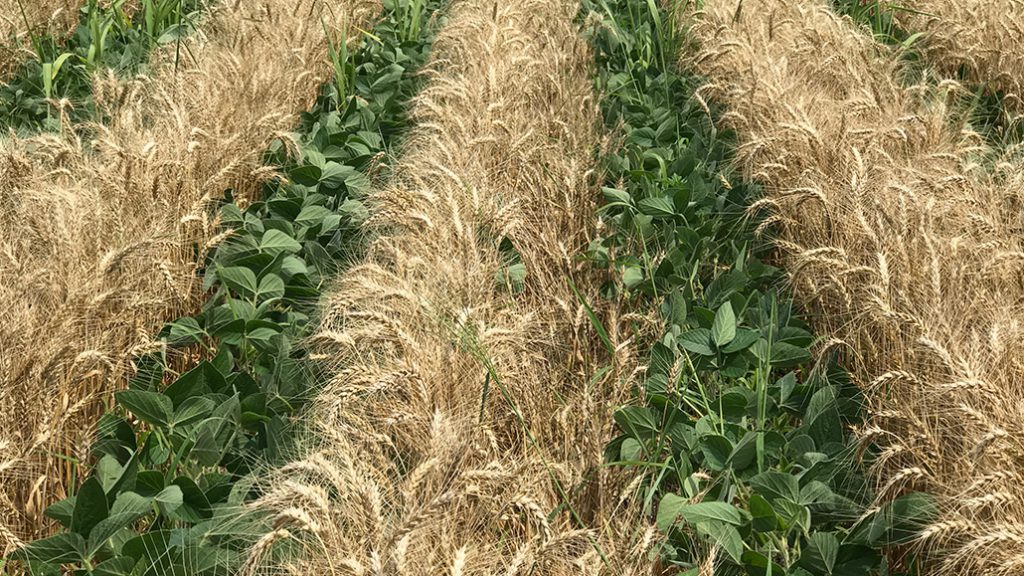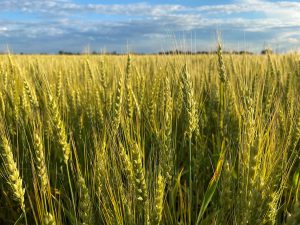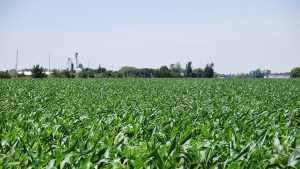Growing two crops at once
RELAY CROPPING

IS IT POSSIBLE to simultaneously grow two crops in the same field, while also reducing input costs? Jason Mauck, a livestock producer and grain farmer from Indiana, certainly thinks so.
In a session during the Innovative Farmers Association of Ontario’s 2021 virtual conference, Mauck detailed the benefits and challenges of what he calls a “constant canopy” approach to crop production. With the right setup, he says, it is possible for farmers to improve the soil, drastically reduce seed populations, and make more money.
WHAT IS RELAY CROPPING?
Relay cropping involves planting a second crop into a more mature, pre-existing crop. Differing from traditional double-cropping systems, relaying allows both plant species to grow in tandem, at least for a time, and eliminates the time pressure associated with planting a new crop post-harvest.
Some Ontario farmers have experimented with relay systems in the past. A Crop Talk article published by the Ontario Ministry of Agriculture, Food and Rural Affairs in November 2018, for example, details data generated — and challenges encountered — of one farmer experimenting with soybeans planted between rows of winter wheat. It also references a wider group of farmers who, at the time of writing, were looking for additional partners to experiment with the system in Ontario conditions.
Managing soybeans and wheat together in a single season is no walk in the park, however.
The article lists a number of considerations, including weed control and competition from existing plants — particularly in dry or otherwise stressful field conditions. Finding the right population to make up for yield losses is tricky too. And at harvest, combine headers need to be equipped with shields to prevent the cutter-bar from slicing both crops at once. Each tire also has to align with the earlier-planted crop rows, and residue must be spread in a way which does not smother still growing plants.
EVERY CHALLENGE HAS A SOLUTION
Mauck admits relay cropping is not inherently easy, though he says it is possible to overcome challenges through experimentation — and by focusing on more than just pure operational efficiency. His approach starts by considering the specific production challenges of each field (such as nutrient retention).
In the fall, Mauck tries to apply manure to every wheat field — a task made easier by the sizable hog operation that makes up another part of his business. In order to capture more nutrients, those same fields are also seeded with winter-kill cover crops.
Because relay cropping involves leaving wide rows between the initial crop, leftover cover crop residue also helps supress early-season weeds. This combined approach, Mauck says, gives him a good starting place from which to address later season challenges.
Winter wheat is seeded in 60-inch rows. In spring, soybeans are planted at 20-inch intervals between wheat rows. The soybeans can thus establish into a living root mass which, as the season progresses, turns from a moisture consumer to a moisture conserver. Additional resiliency in both wet and dry conditions is the result.
Since experimentation sometimes means failure (also referred to as learning opportunities), costs on the equipment side need to be kept to reasonable levels. It is for this reason Mauck prefers to adapt older equipment to conditions in the field, such as shields accounting for row spacing variations.
LEVERAGING THE SUN AND MOISTURE
A second element of Mauck’s strategy is finding ways to better utilize the sun’s energy. Taking what he describes as a “landscaper’s approach,” he designs his fields to ensure each row receives just the right amount of solar power.
Pruning soybeans at the full flower (R2) stage, for example, lets sunlight hit the entire plant rather than just the canopy. The additional space also means less fungal pressure due to increase airflow, as well as more light reflected upwards by crop residues. When it comes to relaying corn with soybeans, the right design can also shield the latter for a brief period during the hottest and most stressful part of the day.
Overall, he says the crops lose the need to compete vegetatively and redirect energy for increased pod production.
“Every year we get a lot of rainfall, this [wheat and soybean system] really kills the monocrops in yield,” says Mauck.
Lowering seeding rates is another light-harnessing strategy, and a means of lowering seeding costs. While the numbers can vary, 800,000 to one million wheat seeds per acre is standard when no manure is applied. With manure, Mauck has successfully dropped that number as low as 250,000. Soybean populations generally hover around 120,000 seeds per acre.
This strategy is based on the “Pareto Distribution” – a probability equation which can determine the optimal meeting place between input and output. In Mauck’s case, sacrificing a little yield can actually be more profitable in the grand scheme provided all relevant factors are accounted for.
“In corn I can plant 30,000 seeds to maximize yield, but if we plant 3,000 seeds, we won’t get 10 per cent yield. We may get 40 or 50 per cent because the environment and the inputs are the same,” he says, later adding “I can get more output for less input in that space…What are you hurting if your soybeans are better off?”
ENDLESS GROWTH NOT A LONG-TERM SOLUTION
For Mauck, relay cropping is rooted in more than a basic drive for sustainability. It is a practical approach to a wider philosophical focus — that is, taking better advantage of sustainable, readily available resources to grow crops, while simultaneously extracting less.
He also reiterates a willingness to try new things is critical. Doing so does bring risks, of course, though never changing anything is far more dangerous.
“Everything in nature is a product of its environment. It takes years of a system in place before you really see the benefits.” •

























